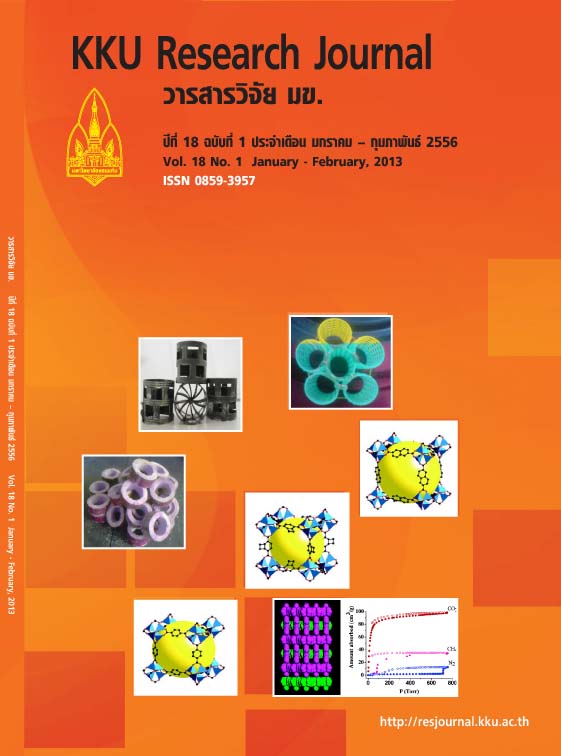Energy efficiency improvement in a community-scale whisky factory of Thailand
Main Article Content
Abstract
There are 4,595 community-scale whisky producers in Thailand. Most of them are in rural area and lack of engineering knowledge in equipment design and operation. The objectives of this research are to improve energy efficiency by designing and installing a high efficiency whisky distillation set for a community-scale whisky factory and to use the facility for demonstration and dissemination. The implemented energy conservation measures were the following installations and modifications: insulation for the evaporator, heat recovery from waste water, pre-heating for fermented liquor, high efficiency evaporator, high efficiency condenser, and high efficiency stove & air-fuel ratio improvement. Besides the equipment improvements, the proper operation and maintenance procedure were provided to the operators as follows: rate of fuel feed into the stove (consistency of the rate), control of fuel feed during temperature raising period (before alcohol is evaporated) and temperature maintaining period (during alcohol is evaporated), and soot removal schedule. An estimate of the conserved energy of the modified unit with proper operation and maintenance is 1,025 GJ/year and the avoided CO2 emission is 112 ton/year. The payback period of each measure ranges 0.36-6.33 years, while the overall financial parameters as NPV, B/C ratio, IRR, and PBP are 301,629 Baht, 5.47, 46.92 % and 2.23 years, respectively. The energy consumption of the conventional whisky distillation set was 1,413 GJ/Year. After implementation, the actual amount of energy consumption was evaluated, and the energy saving was determined to be 900 GJ/Year, which was 63.7% of saved energy compared to consumption of the conventional set. The major cause was the operation practices (operation errors) that did not allow the same level of precision in controlling as machinery. The other causes were the uncontrollable ambient humidity, and moisture content in wood chips which were used as fuel. It is evident that if all the community-scale whisky factories modify their facilities in accordance with this unit, a great positive financial and environmental improvement will be achieved.
Article Details
References
[2] American Society of Heating, Refrigeration, and Air-Conditioning Engineers. ASHRAE 2009 Fundamentals. Atlanta, Georgia; 2009.
[3] Bureau of Human Resource Development. Senior People who Responsible in Energy. Department of Energy Development and Efficiency, Bangkok; 2010. Thai.
[4] John H. Lienhard . A Heat Transfer Textbook. 3rd Edn., Phlogiston Press, Massachusett; 2006.
[5] Testo Incorporation. Testo Operation Instruction Manual. Testo Incorporation, New Jersey, USA; 2009.
[6] Intergovernmental Panel on Climate Change. 2006 IPCC Guidelines for National Greenhouse Gas Inventories, Programme Technical Support Unit, Japan; 2006. p. 2.12-2.19.


